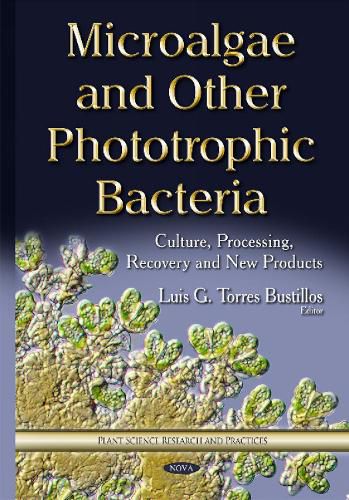Readings Newsletter
Become a Readings Member to make your shopping experience even easier.
Sign in or sign up for free!
You’re not far away from qualifying for FREE standard shipping within Australia
You’ve qualified for FREE standard shipping within Australia
The cart is loading…






Microalgae are primary producers of oxygen and exhibit an enormous potential for biotechnological applications. Microalgae cultivation is also an interesting option for wastewater treatment. These microorganisms are efficient in recovering high amounts of nitrogen, inorganic phosphorus, and heavy metals from effluents. Furthermore, microalgae are responsible for the reduction of CO2 from gaseous effluent and from the atmosphere, reducing the greenhouse gases effect. On the other hand, microalgae biomass can be used for the production of pigments, lipids, foods, and renewable energy. The culture of microalgae is not a new issue, since for many decades they have been employed with aquaculture purposes. In fact, some species of Nostoc, Arthrospira (Spirulina) and Aphanizomenon species have been used as food for thousands of years for food applications. The treatment of wastewaters employing microalgae has been reported for decades (specifically for the elimination of phosphorus and nitrogen compounds). Nowadays, there is an increasing interest in the production of biofuels. Bioethanol, biohydrogen, bio-methane, biodiesel and other novel products can be obtained using microalgae as biomass or metabolic products (sugars, lipids, etc). In the near future, microalgae can be oriented (via molecular engineering) to the production of the hole biofuels, such as biodiesel or bio-turbosins. Microalgae and Other Phototrophic Bacteria is a book which will provide information for academics students, policy makers and the general public regarding the state of the art in the field, as well as detailed descriptions of the methodologies employed for culture, processing, recovery and new products. Aspects covered by this book are the microalgae and other phototrophic bacteria.
$9.00 standard shipping within Australia
FREE standard shipping within Australia for orders over $100.00
Express & International shipping calculated at checkout
Microalgae are primary producers of oxygen and exhibit an enormous potential for biotechnological applications. Microalgae cultivation is also an interesting option for wastewater treatment. These microorganisms are efficient in recovering high amounts of nitrogen, inorganic phosphorus, and heavy metals from effluents. Furthermore, microalgae are responsible for the reduction of CO2 from gaseous effluent and from the atmosphere, reducing the greenhouse gases effect. On the other hand, microalgae biomass can be used for the production of pigments, lipids, foods, and renewable energy. The culture of microalgae is not a new issue, since for many decades they have been employed with aquaculture purposes. In fact, some species of Nostoc, Arthrospira (Spirulina) and Aphanizomenon species have been used as food for thousands of years for food applications. The treatment of wastewaters employing microalgae has been reported for decades (specifically for the elimination of phosphorus and nitrogen compounds). Nowadays, there is an increasing interest in the production of biofuels. Bioethanol, biohydrogen, bio-methane, biodiesel and other novel products can be obtained using microalgae as biomass or metabolic products (sugars, lipids, etc). In the near future, microalgae can be oriented (via molecular engineering) to the production of the hole biofuels, such as biodiesel or bio-turbosins. Microalgae and Other Phototrophic Bacteria is a book which will provide information for academics students, policy makers and the general public regarding the state of the art in the field, as well as detailed descriptions of the methodologies employed for culture, processing, recovery and new products. Aspects covered by this book are the microalgae and other phototrophic bacteria.